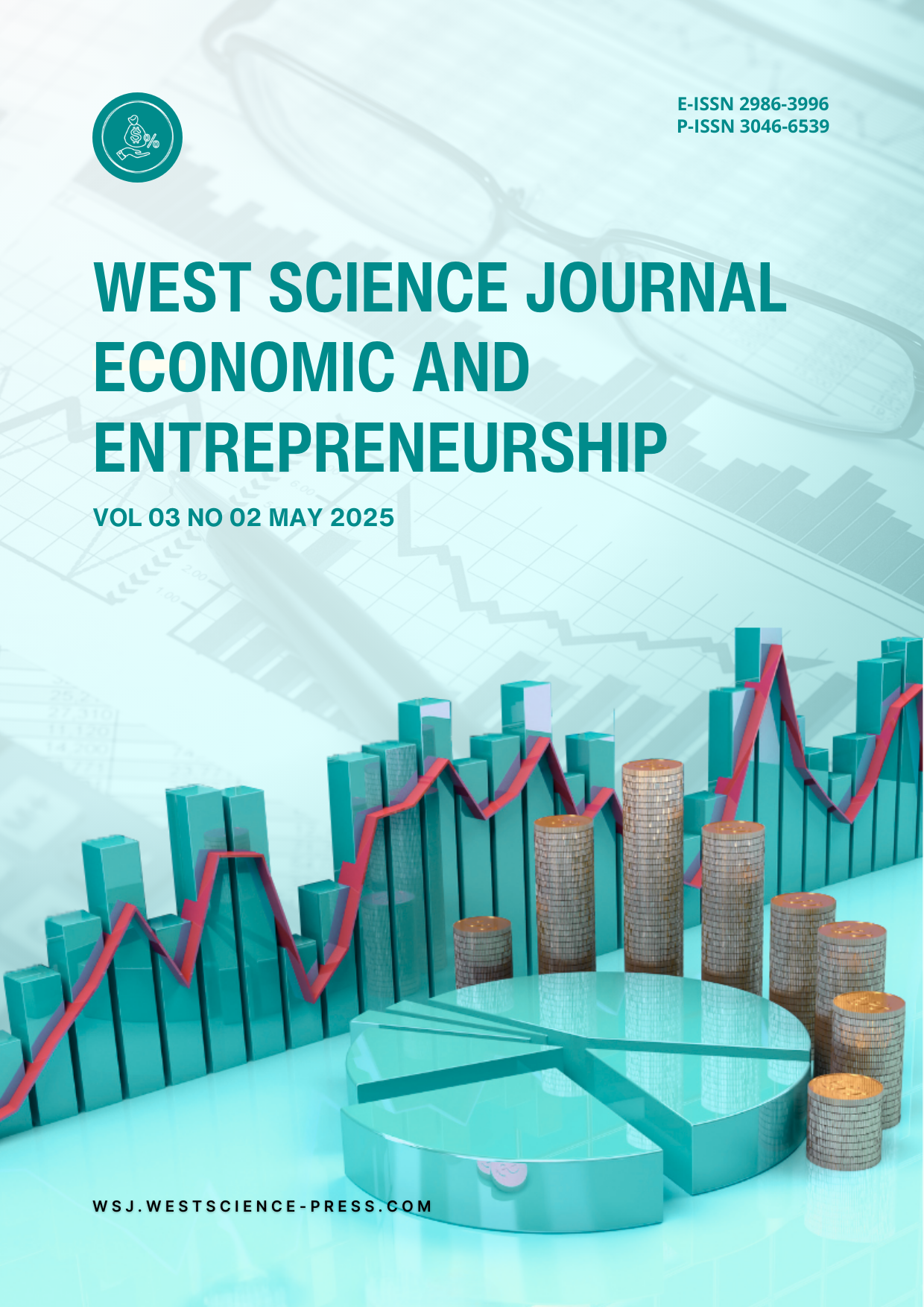A Bibliometric Study of Business Model Innovation Literature
DOI:
https://doi.org/10.58812/wsjee.v3i02.1930Keywords:
Business Model Innovation, Bibliometric Analysis, VOSviewer, Digital TransformationAbstract
This study presents a comprehensive bibliometric analysis of the global literature on Business Model Innovation (BMI), aiming to uncover its intellectual structure, thematic evolution, and collaborative research patterns. Utilizing data from the Scopus database and visualization tools such as VOSviewer, the study analyzes key co-citation networks, author collaborations, keyword co-occurrences, and temporal publication trends. The findings reveal that BMI has developed around several foundational scholars—most notably Zott, Osterwalder, Chesbrough, and Teece—while branching into emerging research areas such as digital transformation, sustainability, and circular economy. Geographically, the field is led by countries such as China, Germany, and the United States, with increasing contributions from developing economies. Thematic analysis indicates a shift from traditional strategy-oriented perspectives to more dynamic, digitally enabled, and sustainability-driven approaches. This study contributes to the literature by mapping the evolution of BMI as an interdisciplinary field and identifying future research opportunities, particularly in underexplored regions and application contexts.
References
[1] L. Massa and C. L. Tucci, “Business model innovation,” Oxford Handb. Innov. Manag., vol. 20, no. 18, pp. 420–441, 2013.
[2] D. J. Teece, “Business models, business strategy and innovation,” Long Range Plann., vol. 43, no. 2–3, pp. 172–194, 2010.
[3] D. Ibarra, J. Ganzarain, and J. I. Igartua, “Business model innovation through Industry 4.0: A review,” Procedia Manuf., vol. 22, pp. 4–10, 2018.
[4] N. Donthu, S. Kumar, D. Mukherjee, N. Pandey, and W. M. Lim, “How to conduct a bibliometric analysis: An overview and guidelines,” J. Bus. Res., vol. 133, pp. 285–296, 2021.
[5] H. Chesbrough, “Business model innovation: opportunities and barriers,” Long Range Plann., vol. 43, no. 2–3, pp. 354–363, 2010.
[6] N. M. P. Bocken, S. W. Short, P. Rana, and S. Evans, “A literature and practice review to develop sustainable business model archetypes,” J. Clean. Prod., vol. 65, pp. 42–56, 2014.
[7] P. C. Verhoef et al., “Digital transformation: A multidisciplinary reflection and research agenda,” J. Bus. Res., vol. 122, pp. 889–901, 2021.
[8] M. W. Johnson, C. M. Christensen, and H. Kagermann, “Reinventing your business model,” Harv. Bus. Rev., vol. 86, no. 12, pp. 50–59, 2008.
[9] D. J. Teece, “Business models and dynamic capabilities,” Long Range Plann., vol. 51, no. 1, pp. 40–49, 2018.
[10] N. J. Foss and T. Saebi, “Fifteen years of research on business model innovation: How far have we come, and where should we go?,” J. Manage., vol. 43, no. 1, pp. 200–227, 2017.
[11] M. Ghobakhloo, “Industry 4.0, digitization, and opportunities for sustainability,” J. Clean. Prod., vol. 252, p. 119869, 2020.
[12] H. Chesbrough, “Business model innovation: it’s not just about technology anymore,” Strateg. Leadersh., vol. 35, no. 6, pp. 12–17, 2007.
[13] E. Autio, S. Nambisan, L. D. W. Thomas, and M. Wright, “Digital affordances, spatial affordances, and the genesis of entrepreneurial ecosystems,” Strateg. Entrep. J., vol. 12, no. 1, pp. 72–95, 2018.
[14] R. Amit and C. Zott, “Creating value through business model innovation,” MIT Sloan Manag. Rev., 2012.
Downloads
Published
Issue
Section
License
Copyright (c) 2025 Loso Judijanto

This work is licensed under a Creative Commons Attribution-ShareAlike 4.0 International License.
























 Instagram
Instagram 